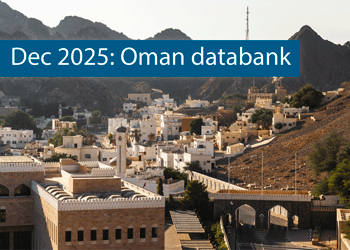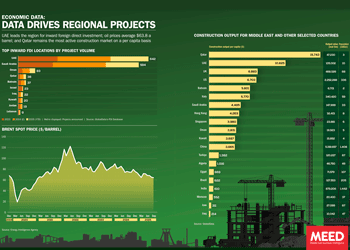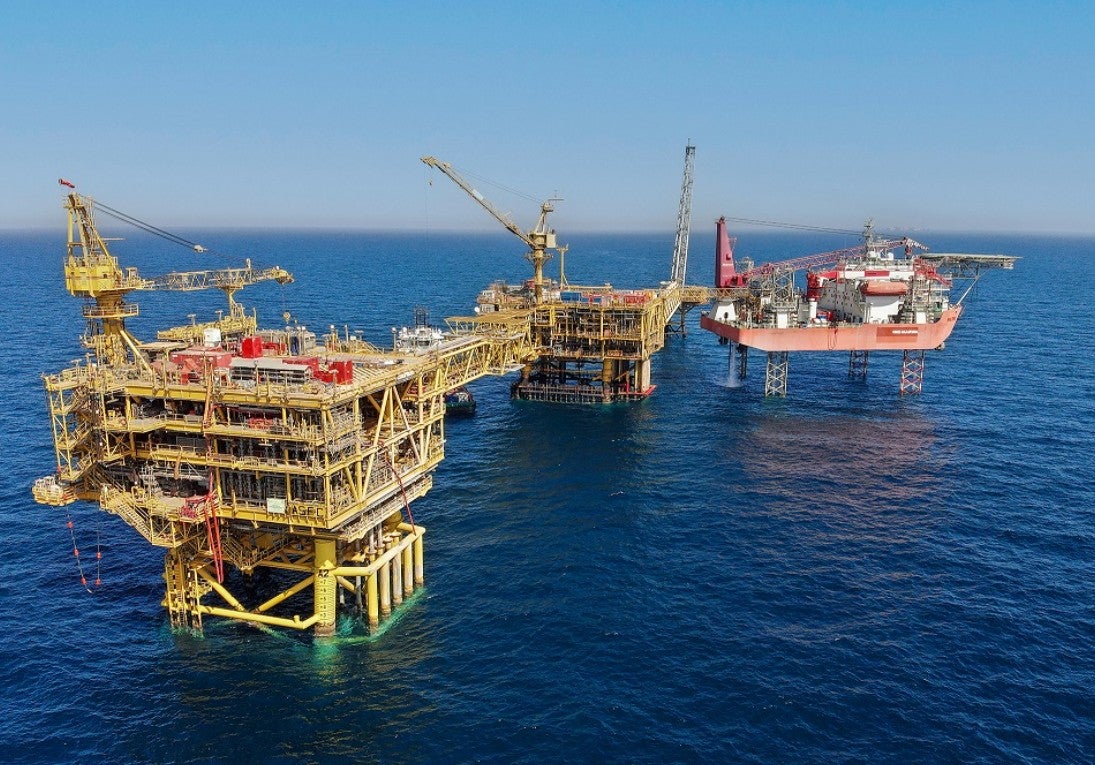UAE utilities ramp up capacity procurement
4 October 2024
Abu Dhabi state utility Emirates Water & Electricity Company (Ewec) invited bids for contracts to develop three independent power producer (IPP) projects in rapid succession in the third quarter of 2024.
These projects comprise the 2,500GW Taweelah C combined-cycle gas turbine plant, the 1,500MW Madinat Zayed open-cycle gas turbine project and the 400MW battery energy storage system to be located in Al-Bihouth and Madinat Zayed.
They bring the number of Ewec’s electricity generation IPP projects currently under tender to four, in addition to the 1,500MW Al-Khazna solar photovoltaic (PV) IPP, which it tendered in April.
Ewec also issued the expression of interest notice on 1 October for a contract to develop the emirate’s fifth solar PV IPP, the 1,500MW Al-Zarraf project.
This robust project pipeline implies that the offtaker and developers, investors and contractors bidding for these projects have entered a hectic period compared to the past few years.
Abu Dhabi’s growing IPP pipeline will compete with Saudi Arabia’s equally robust pipeline for developers’ and contractors’ resources over the near to medium term as both states endeavour to meet their 2030 decarbonisation targets.
Abu Dhabi plans to procure 1,400MW of renewable energy capacity annually between 2027 and 2037 and to meet more than 50% of the emirate’s electricity demand from renewable and clean energy sources by 2030. This is expected to rise to 60% by 2035.
It also previously stated that it expects to reach a renewable energy installed capacity of 7,500MW by 2030, or three times its current capacity.
The expiry of power-purchase agreements for several generation assets over the next couple of years and the likelihood of these contracts not being extended also drive Abu Dhabi’s procurement programme for gas-fired capacity.
Dubai has a slightly different strategy. Dubai Electricity & Water Authority (Dewa) has abandoned any plans to procure additional gas-fired capacity in the foreseeable future.
Dubai’s future generation projects will be focused on the Mohammed Bin Rashid Solar Park, which is expected to reach an installed capacity of 5,000MW by 2030.
So far, Dewa has awarded contracts for the first six phases of the project, which have a total combined capacity of 4,600MW.
Further phases are being planned, with the state utility expected to appoint transaction advisers for phase seven, for which the capacity has not yet been made public, next year.
“The volume of projects coming to the market is almost unprecedented,” notes an industry source, who expects that utility developers are starting to be selective when bidding for new contracts regardless of the energy source.
Nuclear capacity
Notably, the UAE’s Federal Authority for Nuclear Regulation announced that the fourth reactor, or Unit 4, of the Barakah nuclear power plant in Abu Dhabi reached commercial operations in early September.
It marks the completion of the $43bn, 5,600MW Barakah 1 project, which was jointly implemented by the UAE’s Emirates Nuclear Energy Corporation (Enec) and South Korea’s Korea Electric Power Corporation (Kepco).
The entire plant reached full commercial operations approximately 16 years after Abu Dhabi first announced the project in 2008 and 12 years after construction works commenced on Unit 1.
The completion of Barakah 1 also implies that the project’s next phase is likely to proceed in earnest.
Hamad Alkaabi, the UAE’s permanent representative to the Austria-based International Atomic Energy Agency, said in July that the UAE government is considering initiating the tendering process for its next nuclear power plant this year.
Apart from the final tendering process decision, the market is also keen to know who will be invited to bid or submit proposals for the contract to implement the nuclear power facility’s next phase.
Washington and Abu Dhabi entered into the bilateral 123 Agreement for peaceful nuclear cooperation in 2009, which could determine to a large extent which companies or countries will be invited to participate in the project’s next phase.
What the rush is about
Ewec has made clear that expiring generation capacities and the need for gas-fired baseload as more renewable energy enters the UAE electricity grid underpin its ambitious capacity procurement pipeline.
Other factors influencing future capacity procurement plans include the UAE’s multibillion-dollar national industrialisation strategy. This strategy involves expanding downstream industries, including clean hydrogen production for both domestic and export use, potentially resulting in an exponential increase in peak demand.
This is in addition to the need to decarbonise while expanding the production of hard-to-abate sectors such as the oil and gas, steel and aluminium industries.
In addition to these demand sources, many believe the UAE’s 2031 National Artificial Intelligence (AI) Strategy is a major contributor to Abu Dhabi’s ongoing generation capacity buildout.
“They need to build power-hungry data centres to support their AI strategy,” notes an executive with an international infrastructure investment firm with offices in Dubai.
The UAE’s AI strategy encompasses deploying AI in priority sectors and “providing the data and infrastructure essential to become a test bed for AI”.
Meeting these and the other stated objectives, in addition to the data sovereignty regulations, has started driving a boom in data centre construction across the UAE.
State-backed enterprises, utilities, banks, logistics, tourism and service industries, and real estate companies have launched or are expected to launch AI programmes to boost productivity and efficiency, in line with the UAE’s 2050 net-zero target and circular carbon economy strategy.
These span industry-specific applications ranging from chatbots and small-language models to generative AI and large-language models, the latter of which require significant data bandwidth and consume enormous amounts of energy.
AI applications in defence and national security are also presumed to be a major component of the overall AI plan.
“The AI programme is progressing,” notes an Abu Dhabi-based utility executive, confirming a plan to procure 5,000MW of AI-dedicated thermal capacity.
Exclusive from Meed
-
 Oman’s growth forecast points upwards
Oman’s growth forecast points upwards24 December 2025
-
 December 2025: Data drives regional projects
December 2025: Data drives regional projects23 December 2025
-
 Local firm bids lowest for Kuwait substation deal
Local firm bids lowest for Kuwait substation deal22 December 2025
-
 Saudi-Dutch JV awards ‘supercentre’ metals reclamation project
Saudi-Dutch JV awards ‘supercentre’ metals reclamation project22 December 2025
-
 QatarEnergy LNG awards $4bn gas project package
QatarEnergy LNG awards $4bn gas project package22 December 2025
All of this is only 1% of what MEED.com has to offer
Subscribe now and unlock all the 153,671 articles on MEED.com
- All the latest news, data, and market intelligence across MENA at your fingerprints
- First-hand updates and inside information on projects, clients and competitors that matter to you
- 20 years' archive of information, data, and news for you to access at your convenience
- Strategize to succeed and minimise risks with timely analysis of current and future market trends

Related Articles
-
 Oman’s growth forecast points upwards
Oman’s growth forecast points upwards24 December 2025

MEED’s January 2026 report on Oman includes:
> COMMENT: Oman steadies growth with strategic restraint
> GVT & ECONOMY: Oman pursues diversification amid regional concerns
> BANKING: Oman banks feel impact of stronger economy
> OIL & GAS: LNG goals galvanise Oman’s oil and gas sector
> POWER & WATER: Oman prepares for a wave of IPP awards
> CONSTRUCTION: Momentum builds in construction sectorTo see previous issues of MEED Business Review, please click herehttps://image.digitalinsightresearch.in/uploads/NewsArticle/15306449/main.gif -
 December 2025: Data drives regional projects
December 2025: Data drives regional projects23 December 2025
Click here to download the PDF
Includes: Top inward FDI locations by project volume | Brent spot price | Construction output
MEED’s January 2026 report on Oman includes:
> COMMENT: Oman steadies growth with strategic restraint
> ECONOMY: Oman pursues diversification amid regional concerns
> BANKING: Oman banks feel impact of stronger economy
> OIL & GAS: LNG goals galvanise Oman’s oil and gas sector
> POWER & WATER: Oman prepares for a wave of IPP awards
> CONSTRUCTION: Momentum builds in construction sectorTo see previous issues of MEED Business Review, please click herehttps://image.digitalinsightresearch.in/uploads/NewsArticle/15306140/main.gif -
 Local firm bids lowest for Kuwait substation deal
Local firm bids lowest for Kuwait substation deal22 December 2025
The local Al-Ahleia Switchgear Company has submitted the lowest price of KD33.9m ($110.3m) for a contract to build a 400/132/11 kV substation at the South Surra township for Kuwait’s Public Authority for Housing Welfare (PAHW).
The bid was marginally lower than the two other offers of KD35.1m and KD35.5m submitted respectively by Saudi Arabia’s National Contracting Company (NCC) and India’s Larsen & Toubro.
PAHW is expected to take about three months to evaluate the prices before selecting the successful contractor.
The project is one of several transmission and distribution projects either out to bid or recently awarded by Kuwait’s main affordable housing client.
This year alone, it has awarded two contracts worth more than $100m for cable works at its 1Z, 2Z, 3Z and 4Z 400kV substations at Al-Istiqlal City, and two deals totalling just under $280m for the construction of seven 132/11kV substations in the same township.
Most recently, it has tendered two contracts to build seven 132/11kV main substations at its affordable housing project, west of Kuwait City. The bid deadline for the two deals covering the MS-01 through to MS-08 substations is 8 January.
https://image.digitalinsightresearch.in/uploads/NewsArticle/15305745/main.gif -
 Saudi-Dutch JV awards ‘supercentre’ metals reclamation project
Saudi-Dutch JV awards ‘supercentre’ metals reclamation project22 December 2025
The local Advanced Circular Materials Company (ACMC), a joint venture of the Netherlands-based Shell & AMG Recycling BV (SARBV) and local firm United Company for Industry (UCI), has awarded the engineering, procurement and construction (EPC) contract for the first phase of its $500m-plus metals reclamation complex in Jubail.
The contract, estimated to be worth in excess of $200m, was won by China TianChen Engineering Corporation (TCC), a subsidiary of China National Chemical Engineering Company (CNCEC), following the issue of the tender in July 2024.
Under the terms of the deal, TCC will process gasification ash generated at Saudi Aramco’s Jizan refining complex on the Red Sea coast to produce battery-grade vanadium oxide and vanadium electrolyte for vanadium redox flow batteries. AMG will provide the licensed technology required for the production process.
The works are the first of four planned phases at the catalyst and gasification ash recycling ‘Supercentre’, which is located at the PlasChem Park in Jubail Industrial City 2 alongside the Sadara integrated refining and petrochemical complex.
Phase 2 will expand the facility to process spent catalysts from heavy oil upgrading facilities to produce ferrovanadium for the steel industry and/or additional battery-grade vanadium oxide.
Phase 3 involves installing a manufacturing facility for residue-upgrading catalysts.
In the fourth phase, a vanadium electrolyte production plant will be developed.
The developers expect a total reduction of 3.6 million metric tonnes of carbon dioxide emissions a year when the four phases of the project are commissioned.
SARBV first announced its intention to build a metal reclamation and catalyst manufacturing facility in Saudi Arabia in November 2019. The kingdom’s Ministry of Investment, then known as the Saudi Arabian General Investment Authority (Sagia), supported the project.
In July 2022, SARBV and UCI signed the agreement to formalise their joint venture and build the proposed facility.
The project has received support from Saudi Aramco’s Namaat industrial investment programme. Aramco, at the time, also signed an agreement with the joint venture to offtake vanadium-bearing gasification ash from its Jizan refining complex.
Photo credit: SARBV
https://image.digitalinsightresearch.in/uploads/NewsArticle/15305326/main.gif -
 QatarEnergy LNG awards $4bn gas project package
QatarEnergy LNG awards $4bn gas project package22 December 2025
QatarEnergy LNG, a subsidiary of state-owned QatarEnergy, has awarded the main engineering, procurement, construction and installation (EPCI) contract for a major package for the second phase of its North Field Production Sustainability (NFPS) project.A consortium comprising the Italian contractor Saipem and state-owned China Offshore Oil Engineering Company (COOEC) has secured the EPCI contract for the COMP5 package. The contract value is $4bn, with Saipem declaring its share to be worth $3.1bn.
Milan-headquartered Saipem said the contract will run for about five years. The scope of work comprises engineering, procurement, fabrication and installation of two compression complexes, each including a compression platform, a living quarters platform, a flare platform supporting the gas combustion system, and the related interconnecting bridges. Each complex will have a total weight of about 68,000 tonnes.
Offshore installation operations will be carried out by Saipem’s De He construction vessel in 2029 and 2030.
MEED previously reported that the following contractors submitted bids for the NFPS phase two COMP5 package:
- Larsen & Toubro Energy Hydrocarbon (India)
- McDermott (US)
- Saipem/China Offshore Oil Engineering Company (Italy/China)
QatarEnergy LNG, formerly Qatargas, is said to have issued the tender for the NFPS phase two COMP5 package in the first quarter of the year.
Contractors submitted technical bids for the COMP5 package in late June, while commercial bids were submitted by 8 October, as per sources.
Based upon initial evaluation of bids by QatarEnergy LNG, L&TEH has emerged as the lowest bidder for the COMP5 package, followed by McDermott, with the consortium of Saipem and COOEC in third place, MEED reported in late October.
In the weeks following that, the project operator is said to have engaged all bidders for a final round of negotiations, during which the consortium of Saipem and COOEC is believed to have “clinched the deal”, according to sources.
The detailed scope of work on the COMP5 package covers the EPCI work on the following:
- Two gas compression platforms, each weighing 30,000-35,000 tonnes, plus jacket
- Two living quarters platforms, plus jacket
- Two gas flare platforms, plus jacket
- Brownfield modification work at two complexes
NFPS scheme
QatarEnergy’s North Field liquefied natural gas (LNG) expansion programme requires the state enterprise to pump large volumes of gas from the North Field offshore reserve to feed the three phases of the estimated $40bn-plus programme.
QatarEnergy has already invested billions of dollars in engineering, procurement and construction works on the two phases of the NFPS project, which aims to maintain steady gas feedstock for the North Field LNG expansion phases.
The second NFPS phase will mainly involve building gas compression facilities to sustain and gradually increase gas production from Qatar’s offshore North Field gas reserve over the long term.
Saipem has been the most successful contractor on the second NFPS phase, securing work worth a total of $8.5bn.
QatarEnergy LNG awarded Saipem a $4.5bn order in October 2022 to build and install gas compression facilities. The main scope of work on the package, which is known as EPCI 2, covers two large gas compression complexes that will comprise decks, jackets, topsides, interconnecting bridges, flare platforms, living quarters and interface modules.
The gas compression complexes – CP65 and CP75 – will weigh 62,000 tonnes and 63,000 tonnes, respectively, and will be the largest fixed steel jacket compression platforms ever built.
Following that, Saipem won combined packages COMP3A and COMP3B of the NFPS project’s second phase in September last year.
The scope of work on the combined packages encompasses the EPCI of a total of six platforms, approximately 100 kilometres (km) of corrosion resistance alloy rigid subsea pipelines of 28-inches and 24-inches diameter, 100km of subsea composite cables, 150km of fibre optic cables and several other subsea units.
Separately, QatarEnergy LNG awarded McDermott the contract for the NFPS second phase package known as EPCI 1, or COMP1, in July 2023. The scope of work on the estimated $1bn-plus contract is to install a subsea gas pipeline network at the North Field gas development.
In March this year, India’s Larsen & Toubro Energy Hydrocarbon (LTEH) won the main contract for the combined 4A and 4B package, which is the fourth package of the second phase of the NFPS project and is estimated to be valued at $4bn-$5bn.
The main scope of work on the package is the EPCI of two large gas compression systems that will be known as CP8S and CP4N, each weighing 25,000-35,000 tonnes. The contract scope also includes compression platforms, flare gas platforms and other associated structures.
LTHE sub-contracted detailed engineering and design works on the combined 4A and 4B package to French contractor Technip Energies.
NFPS first phase
Saipem is also executing the EPCI works on the entire first phase of the NFPS project, which consists of two main packages.
Through the first phase of the NFPS scheme, QatarEnergy LNG aims to increase the early gas field production capacity of the North Field offshore development to 110 million tonnes a year.
QatarEnergy LNG awarded Saipem the contract for the EPCI package in February 2021. The package is the larger of the two NFPS phase one packages and has a value of $1.7bn.
Saipem’s scope of work on the EPCI package encompasses building several offshore facilities for extracting and transporting natural gas, including platforms, supporting and connecting structures, subsea cables and anti-corrosion internally clad pipelines.
The scope of work also includes decommissioning a pipeline and other significant modifications to existing offshore facilities.
In addition, in April 2021, QatarEnergy LNG awarded Saipem two options for additional work within the EPCI package, worth about $350m.
QatarEnergy LNG awarded Saipem the second package of the NFPS phase one project, estimated to be worth $1bn, in March 2021.
Saipem’s scope of work on the package, which is known as EPCL, mainly covers installing three offshore export trunklines running almost 300km from their respective offshore platforms to the QatarEnergy LNG north and south plants located in Ras Laffan Industrial City.
Saipem performed the front-end engineering and design work on the main production package of the first phase of the NFPS as part of a $20m contract that it was awarded in January 2019. This provided a competitive advantage to the Italian contractor in its bid to win the package.
https://image.digitalinsightresearch.in/uploads/NewsArticle/15305330/main2239.jpg

